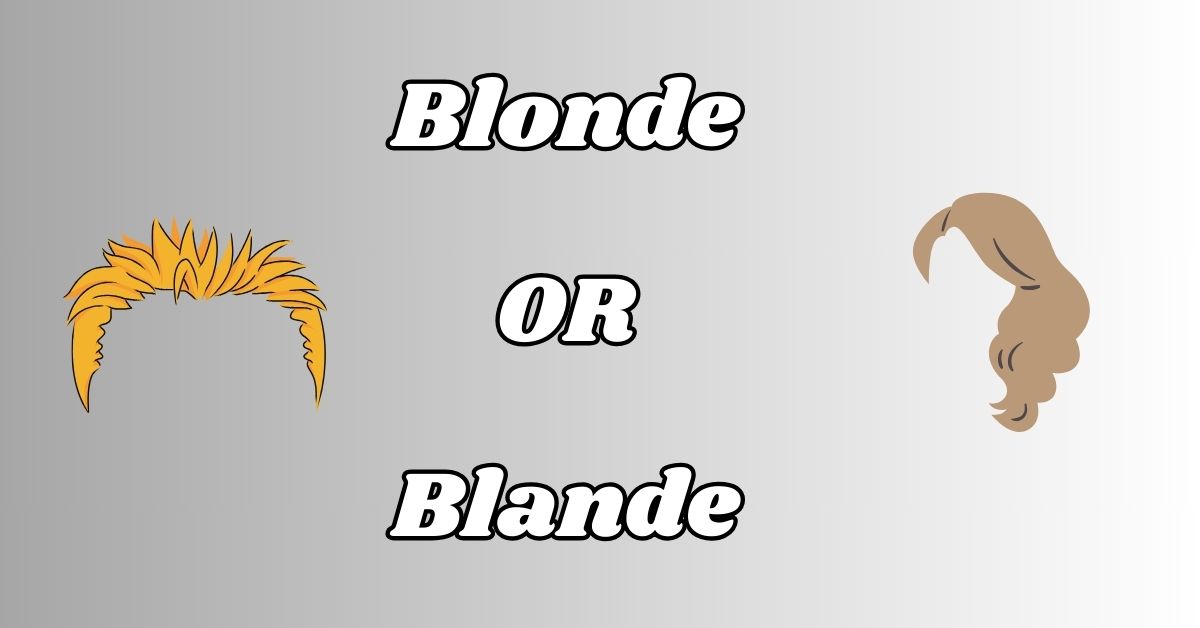Blonde or Blande can often lead to confusion among English speakers. While both terms sound similar, they have distinct meanings that are essential to understand for proper usage.
Blonde typically refers to light-colored hair, often associated with a feminine context, while blande is frequently viewed as a misspelling or incorrect form of the word.
This article aims to clarify the differences between blonde vs blande, providing insights into their definitions, origins, and everyday usage. By the end, you’ll be equipped with the knowledge to use these terms correctly and avoid common mistakes that can arise in conversation and writing.
Quick Summary
Blonde and blande are often confused due to their similar sounds, but they have entirely different meanings. Blonde refers to light-colored hair, typically golden or yellow, and is most commonly used to describe women.
On the other hand, blande is not a recognized word in English and is often considered a misspelling of either blonde or bland. Understanding these differences ensures proper grammar and accurate word usage.
Difference Between Blonde vs Blande
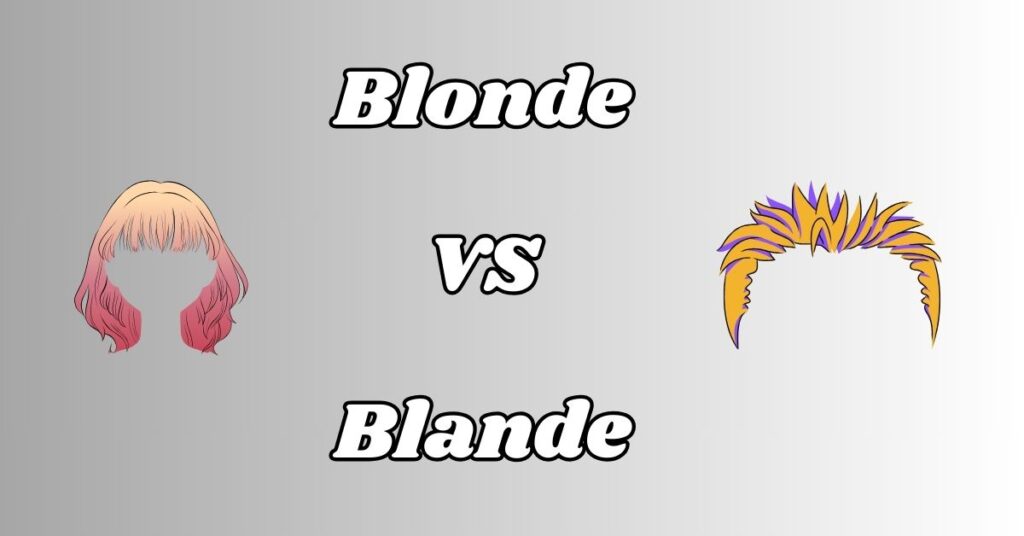
The primary difference between blonde and blande lies in their meanings. Blonde describes a person, usually a woman, with light-colored hair ranging from golden to pale yellow. On the other hand, blande is not a recognized word in standard English.
It may appear as a misspelling of blonde, leading to confusion. Some might mistakenly use blande when they mean to say bland, which describes something lacking flavor or excitement. Therefore, it is crucial to use the correct term based on context.
Origins of the Word Blonde
The term blonde refers to hair of a golden or light golden-brown color, originating from the Old French word “blont,” meaning “fair.” Its roots may be traced back to the Medieval Latin “blundus,” which means “yellow.”
Some theories suggest a Germanic origin, possibly linked to the Old English term for “dyed” hair. The word was reintroduced into English in the 17th century and has since been associated with cultural ideals of beauty, especially among ancient Greeks and Romans, who prized fair hair.
Blonde: Definition and Usage
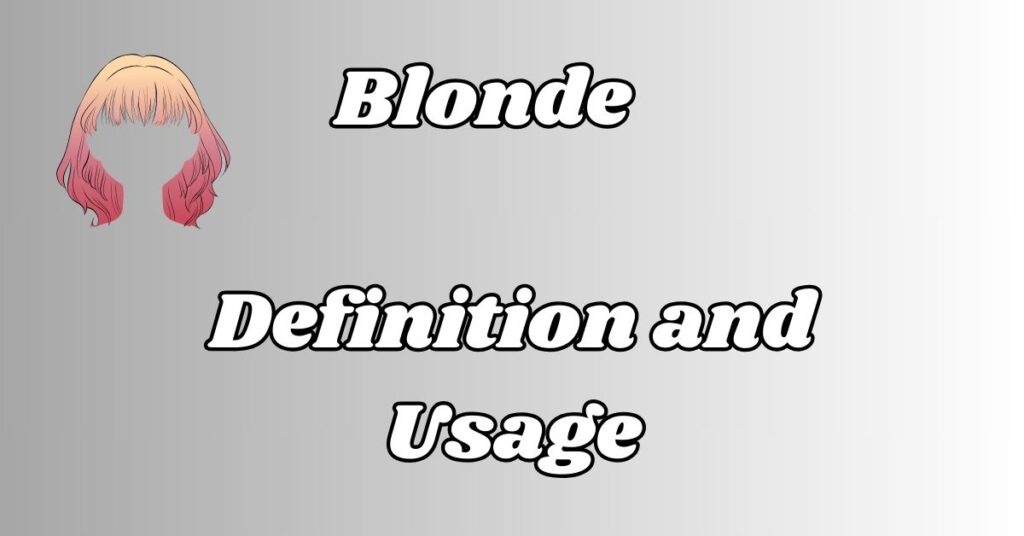
Blonde is primarily used to describe someone with light-colored hair, ranging from golden to pale yellow. Originating from French, it typically refers to women, though “blond” can describe men.
The term appears in various contexts, including descriptions of physical appearance in literature, media, and everyday conversations. Cultural associations often link “blonde” hair with beauty, youth, and specific personality traits.
Blonde Definition
Blonde refers to a person, typically a woman, with light-colored hair that can range from golden to pale yellow. This term originates from the French language, where it specifically denotes fair-haired individuals.
In English, blonde can function as both a noun and an adjective, describing not only hair color but also cultural associations linked to beauty and personality traits.
Blonde Usage
You can use blonde in various contexts, particularly when discussing hair color. For example, you might say someone has beautiful blonde hair or that a character in a story is described as blonde.
The term conveys not just color but also cultural associations and stereotypes often linked with blonde individuals.
Uses of Blonde in a Sentence
To illustrate how to use blonde, here are a few examples:
- She has long, flowing blonde hair that shines in the sunlight.
- The actress is known for her striking blonde locks and captivating performances.
- He prefers to date women with blonde hair because he finds it attractive.
- The painting features a beautiful blonde figure standing by the sea.
- Many people associate summer with getting highlights that make their hair look more blonde.
Synonyms of Blonde
- Fair-haired
- Golden-haired
- Light-haired
- Flaxen-haired
- Towheaded
- Pale-haired
- Ash-blonde
- Honey-blonde
- Platinum-haired
- Sun-kissed
Blande: Definition and Usage
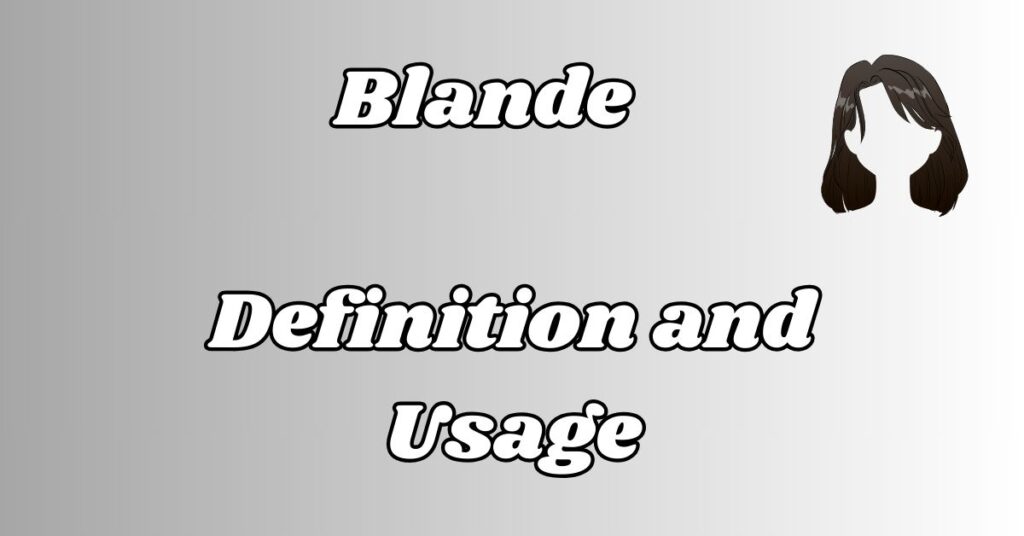
Blande is generally considered a misspelling or non-existent word in standard English. It most likely results from confusion with blonde or bland. While “blonde” describes hair color, and “bland” signifies something dull or lacking flavor, “blande” has no official meaning.
Using “blande” can lead to misunderstandings, making it crucial to proofread written content for spelling errors.
Blande Definition
Blande is generally not recognized as a valid word in English. It often appears as a misspelling of blonde or is confused with bland, which describes something lacking flavor or excitement.
Since blande has no established meaning, its usage can lead to misunderstandings in writing and conversation, making it essential to use the correct terms.
Blande Usage
Blande is rarely used and is often considered incorrect. When someone mistakenly uses “blande,” they typically mean either blonde or bland. For example, saying “She has blande hair” would be incorrect; the proper term is blonde.
Using accurate language helps avoid confusion and ensures effective communication in both writing and speaking.
Side by Side Comparison
| Feature | Blonde | Blande |
| Gender Usage | Feminine | Rarely used |
| Commonality | Commonly used in English | Less common |
| Context | Describes hair color | Limited or specific usage |
Everyday Usage Examples
Understanding how to use words correctly requires observing everyday examples. For “blonde,” you might say, “The blonde actress won an award for her performance,” demonstrating how it describes a person’s hair color.
In contrast, using “blande” is trickier, as it’s not a recognized term. An example attempting to use “blande” might be, “The soup had a blande taste,” but the correct word here is “bland,” meaning lacking flavor. Paying attention to these details ensures clear communication.
Blonde Example
An example of using blonde correctly would be: “Her long, flowing blonde hair caught everyone’s attention at the party.” The term describes the specific hair color of a person and is often associated with beauty or elegance.
In literature and media, “blonde” is frequently used to highlight physical appearance or create vivid imagery for characters.
Examples of Blonde in Context
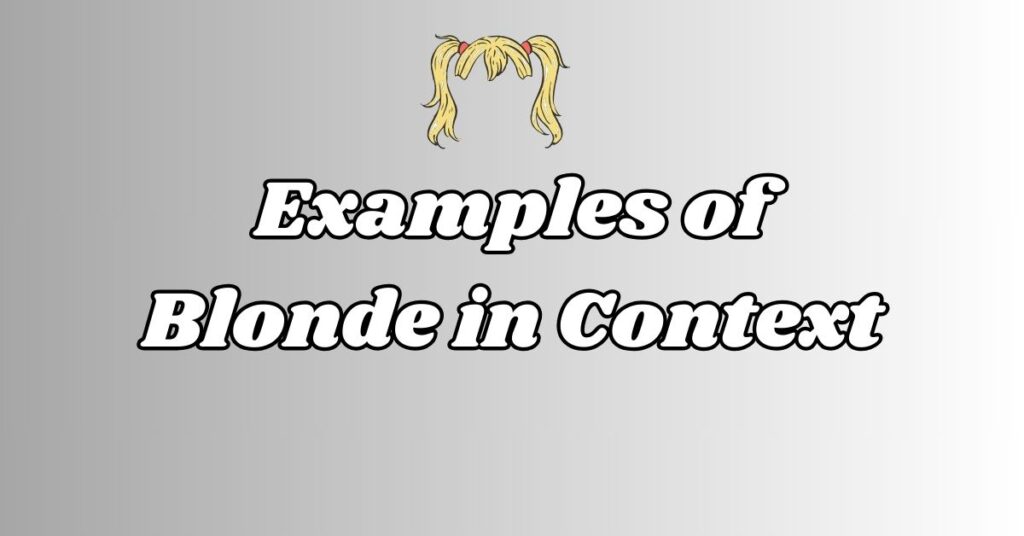
- The blonde girl stood out in the crowd.
- He painted a portrait of a blonde woman.
- The magazine featured a blonde model on its cover.
- She dyed her hair blonde for the summer.
- The film starred a famous blonde actress.
Blande Example
For blande, an example might be: “The soup had a blande taste that left the diners unimpressed.” However, this usage is incorrect because “blande” is not a valid word in English.
The proper term here would be bland, which accurately describes something lacking flavor or excitement. Always ensure correct spelling to avoid such mistakes in your writing.
Examples of Blande in Context
- The dish had a blande flavor that didn’t impress anyone.
- His personality was rather blande, lacking excitement.
- She wore a blande outfit that blended into the background.
- The movie was criticized for its blande storyline.
- His speech was blande and uninspiring.
Common Mistakes
A common mistake people make is confusing blonde with blande, often due to similar pronunciation or typing errors. For instance, someone might write “She has blande hair,” which is incorrect since “blande” has no meaning.
Additionally, some confuse “blonde” with “bland,” leading to awkward sentences like “Her bland hair looked beautiful.” To avoid these errors, focus on context and double-check your spelling during writing.
Tips to Avoid the Mistakes
To help avoid these mistakes, remember these tips:
- Remember that “blonde” typically refers to females with light-colored hair.
- Use “blonde” when describing hair color for women.
- Check context before using “blande,” as it is rarely correct.
- Be mindful of regional differences in spelling; some may prefer “blond” for males.
- Practice using both terms correctly in sentences to reinforce your understanding.
Tips to Remember the Differences
To help you remember the differences between these terms:
- Associate “blonde” with femininity due to its French origin.
- Recall that “blande” is rarely used and often incorrect.
- Use visual aids or flashcards for practice; seeing words can help you remember them better.
- Read examples from reliable sources to reinforce learning about proper usage.
- Engage in conversations about hair color; discussing these topics will enhance your familiarity with the terms.
More Article: Blossom or Blosom: Which One is Correct?
FAQs: Blonde or Blande
Is it Blonde or Blande?
It is blonde, which refers to light-colored hair, while blande is typically a misspelling or incorrect term.
Is Blande grammatically correct?
No, blande is not grammatically correct in standard English and is often considered a misspelling of blonde.
What is the meaning of Blonde?
Blonde describes someone, usually a woman, with light-colored hair ranging from golden to pale yellow.
Which color is blonde?
Blonde hair can vary from golden to light golden-brown shades, often associated with fair-haired individuals.
Conclusion
Understanding the differences between blonde or blande is essential for effective communication. While blonde accurately describes light-colored hair, often associated with beauty and femininity, blande is generally considered a misspelling or incorrect term.
By using the correct terminology, you can avoid confusion and enhance your writing. Remember that clarity in language not only improves your communication skills but also helps convey your ideas more effectively.
Embrace the beauty of language by mastering the distinctions between these terms.
Related Post: Tomorrow or Tommorrow: What’s the Difference?

